Aside from the odd brief respite here and there, weather conditions remained largely horrendous across Britain and Ireland this week, hampering what little enthusiasm could be mustered among the respective nations' soggy, wind-battered birders.
The good news is that we are surely now only days – a few weeks at most – from the first significant arrival of spring migrants, which will no doubt lift spirits. But a spell of calmer and drier weather certainly wouldn't go amiss before then …
The Steller's Eider seems to have settled down at Loch of St Tredwell on Papa Westray, Orkney – it's been reported here four times this month now, including on 23rd and 25th. To the south, in Lothian, the White-winged Scoter also remains on offer.
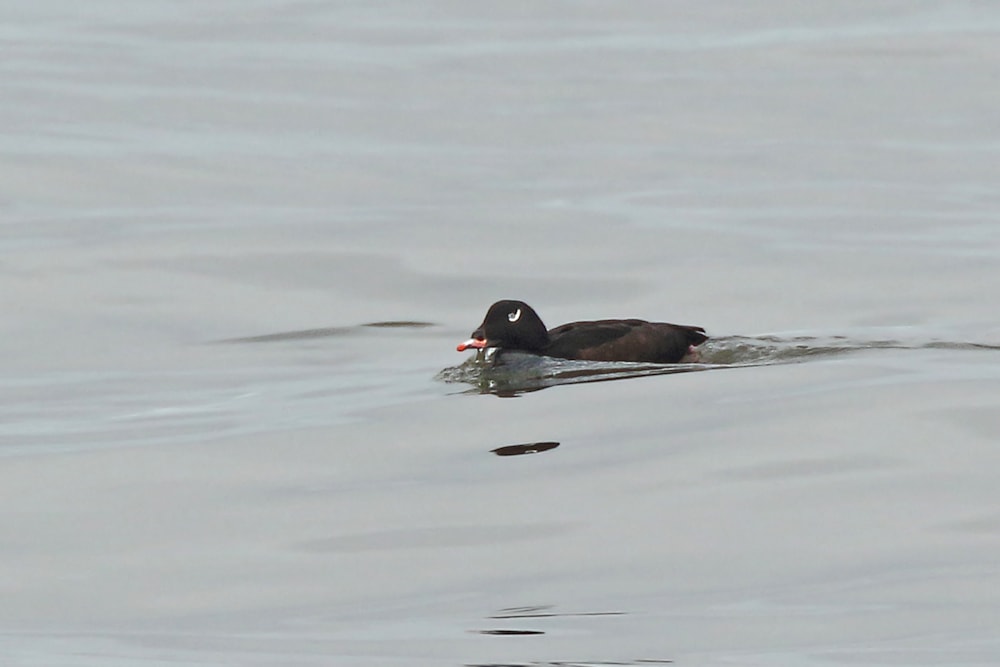
White-winged Scoter, Musselburgh, Lothian (Tom Tams).
Once again, the Shetland Tengmalm's Owl wasn't exactly reliable. After negative news on 20th, it showed up in its favoured Kergord plantation on 23rd but had gone again by the following day. This behaviour appears similar to last year but, with fewer people looking, it's almost inevitable that it won't be seen as often.
It was very much groundhog day as far as rare wildfowl was concerned, with Richardson's Cackling Geese still on North Uist and Islay, the American Black Duck hanging on at Strontian, Highland, and the Blue-winged Teal doing the same at Man Sands, Devon; the Ferruginous Duck at Abberton Res, Essex, wasn't seen beyond 20th. The Grey-bellied Brant was seen again at Balloch, Highland, for the first time since early January. Pacific Divers were off Portscatho, Cornwall, on 21st and Crookhaven, Co Cork, on 23rd.
A Long-billed Dowitcher at Burton Mere Wetlands, Cheshire, from 24th looks to be the same, 'short-billed' (though not Short-billed!) bird earlier in the year at Marshside RSPB; presumably it also called in at Martin Mere WWT, Lancs, on 23rd. The Devon bird was a little more settled at Bowling Green Marsh RSPB, as was the Co Wexford individual at Tacumshin (reported again on 23rd).
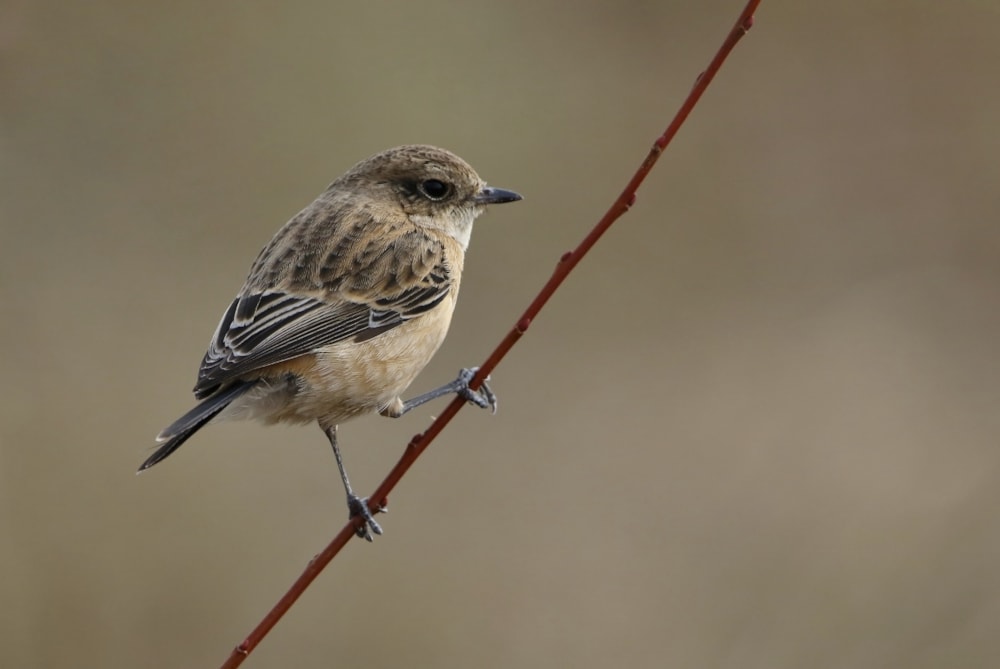
Siberian Stonechat, Ashton's Flash, Cheshire (Sonia Johnson).
A new Bonaparte's Gull was at Lough Gowna, Co Longford, on 23rd, representing an unusual inland Irish record.
The American Buff-bellied Pipit was again at Sennen, Cornwall, on 19th; perhaps the same was then encountered a few times at Nanjizal Valley on subsequent dates. Eastern Yellow Wagtails stuck through the grimmest of the conditions at their favoured sites in Norfolk and Northumberland, as did the Siberian Stonechat at Ashton's Flash, Cheshire.
Finally, the adult male Black-throated Thrush was relocated at Whipsnade Zoo on 23rd – the first sighting of it for 11 days – and the younger male continued to entertain a modest stream of admirers in Grimsby, Lincs.
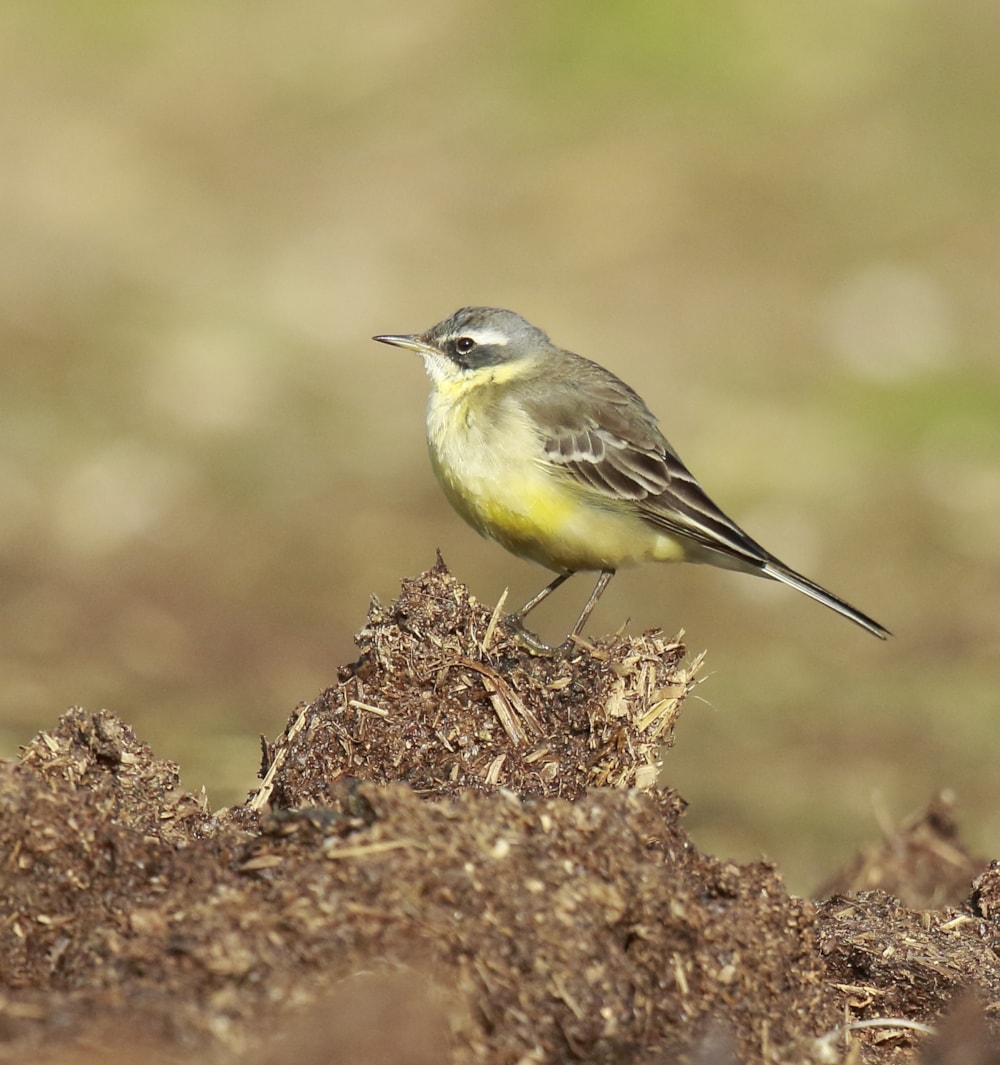
Eastern Yellow Wagtail, Sedgeford, Norfolk (Mark Rayment).
Scottish mainland
A good collection of scarce wildfowl continued to be reported: single Snow Geese were at Ankerville Corner, Highland, and a metal-ringed individual was regularly at New Cumnock, Ayrshire. Back in Highland, Udale Bay continued to host a Ruddy Shelduck, as well as a drake Green-winged Teal. Further south-west, the drake Lesser Scaup lingered among the vast flocks of wintering Greater Scaup at Loch Ryan, Dumfries and Galloway. To the east, up to two Surf Scoter were off the Lothian coast.
There was late news of a Grey Phalarope at Troup Head, Aberdeens, on 17th. Previously reported scarcities included Great Egret at Forfar Loch, Angus, Hoopoe at Clynder, Clyde, and Great Grey Shrikes at Broubster, Highland, and Backwater Res, Angus. The peak Waxwing count this week was 55 in Nairn.
White-winged gull numbers were pitiful, with just a handful of Glaucous and Iceland Gulls noted on the mainland.
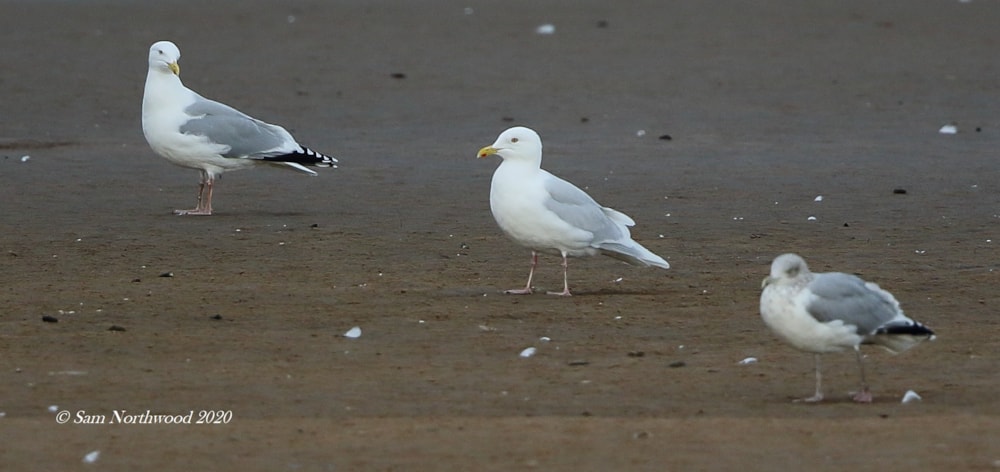
Iceland Gull, Lossiemouth, Moray & Nairn (Sam Northwood).
Northern Isles and the Hebrides
The Snow Goose at Knockintorran rode out a stormy week on North Uist, as did Green-winged Teal on North Ronaldsay, South Uist, Barra and Islay. Tiree's pair of Ring-necked Duck lingered, as did the Barra bird. A wintering White-billed Diver was again noted off Papa Westray and another was off Eoligarry, Barra, on 20th. Still notable on Shetland, a White-tailed Eagle flew over Virkie on 22nd.
White-winged gulls were few and far between, with five Glaucous Gulls around Shetland, four on Orkney and up to seven dispersed around the Hebrides. Iceland Gulls were equally scarce, with three each for Shetland and Orkney, two on the Hebrides and two further south at Portree, Skye.
Mealy Redpolls have been generally thin on the ground this winter so seven at Mulla, Shetland, was worthy of a shout out.
North-East England
A lone Ruddy Shelduck continued to roam around the Cowpen Marsh and Saltholme RSPB area of Cleveland and a female also remained at Rainton Meadows DWT, Co Durham. In Northumberland, a drake Green-winged Teal opened the week at Druridge Pools but was elusive in difficult conditions. That said, an early female Garganey offered some consolation.
The juvenile Iceland Gull was at North Shields throughout the week, occasionally straying to South Shields, and as the week ended a juvenile Glaucous Gull also put in an appearance on the Tyne. Small numbers of Waxwings were noted, with a peak of 20 in Northumberland. As the week ended a count of 130 Twite at the regular haunt of Seaton Snook was a good late-winter total.
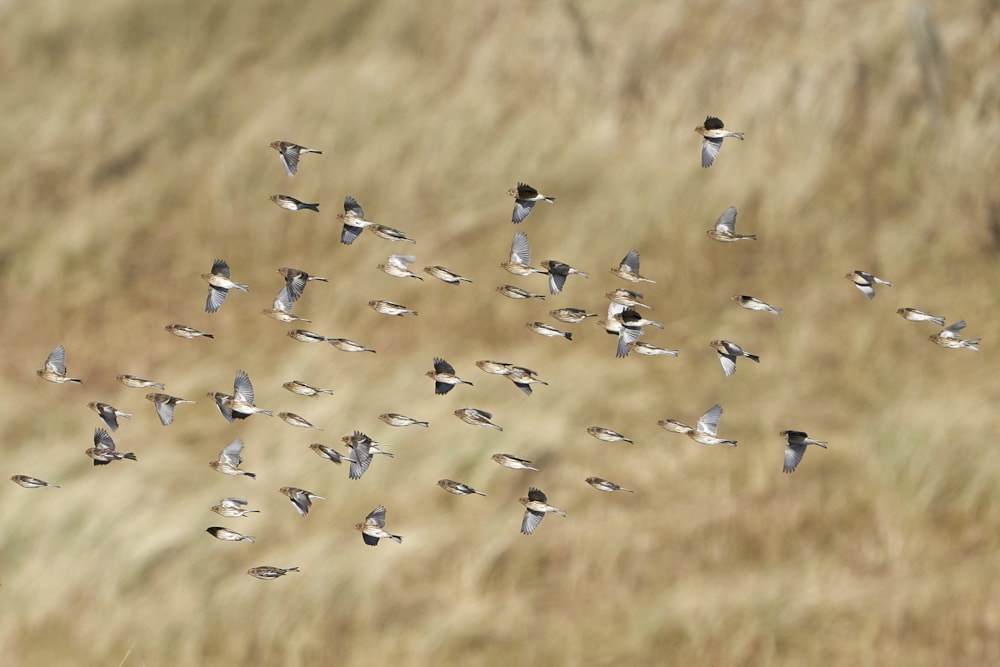
Twite, Druridge Pools, Northumberland (Edwin Marshall).
North-West England
A Black Brant at South Walney NR was the highlight of the week in Cumbria. In Lancashire, the drake Ring-necked Duck extended its long stay at Pine Lake by another week. A drake Smew was again at Wigan Flashes LNR in the week. In Cheshire, the adult Kumlien's Gull was noted again at Sandbach Flashes and an adult Iceland Gull made several appearances at Greater Manchester localities. Decent numbers of Little Gulls were also still being seen on Irish Sea coasts.
Western Cattle Egret numbers remained steady, with 14 at Birkdale, Lancs, the peak regional count; others were noted from four sites in Cheshire. Four Siberian Chiffchaffs included two at Longtown, Cumbria, and singles in Lancashire and Cheshire.
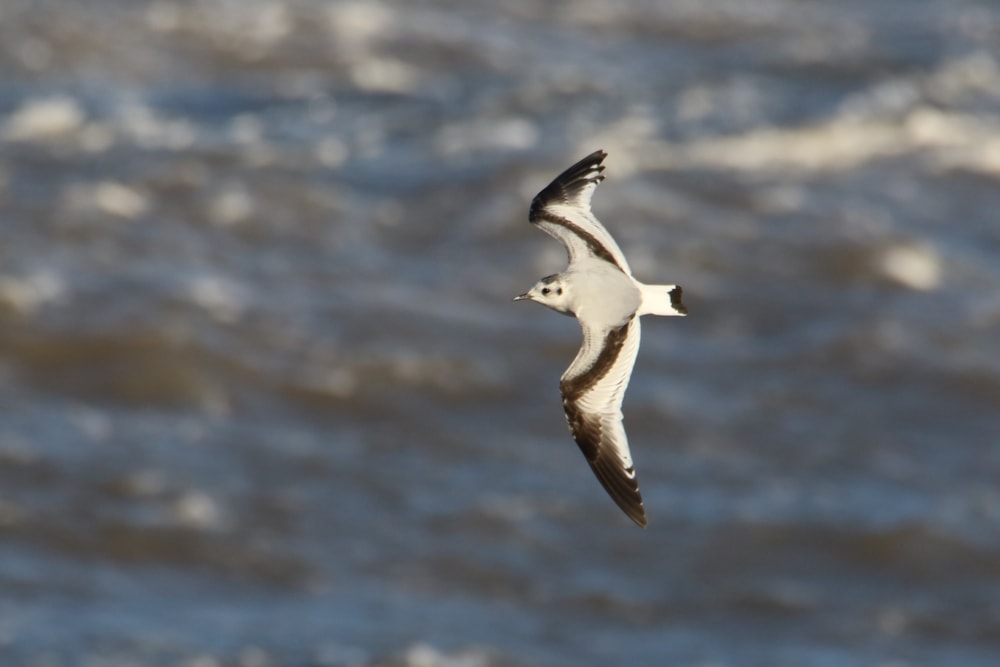
Little Gull, Fleetwood, Lancashire (Steven Higginbottom).
Lincolnshire and Yorkshire
A Balearic Shearwater past Chapel Point on 25th wasn't exactly a typical February record for Lincolnshire, but was nonetheless welcome. Just down the coast at Gibraltar Point, an impressive 44 Water Pipits roosted on 24th and the couple of Tundra Bean Geese were still hanging out on Croft Marsh.
The Ring-necked Duck remained at Woodhall Spa Airfield, while a Rough-legged Buzzard was reported near Wragby on 20th. A Dark-bellied Brent Goose at Boultham Mere was a decent inland occurrence on 21st.
A Woodlark flying south over Spurn, East Yorks, on 25th was a hint that spring is just around the corner, even if an Iceland Gull at Southfield Res on 18th suggested otherwise. Generally, though, it was all a bit of a status quo: Green-winged Teal at Blacktoft Sands and North Cave Wetlands, Smew and Long-tailed Duck at Hornsea Mere.
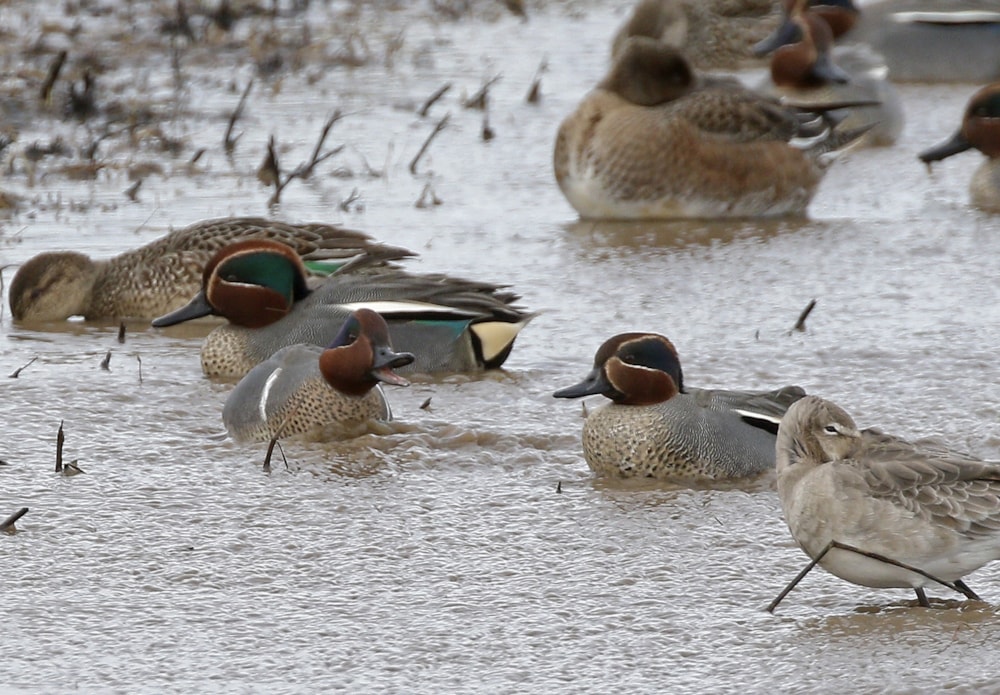
Green-winged Teal, Blacktoft Sands RSPB, East Yorkshire (Mark Coates).
A new Siberian Chiffchaff was at Thorne Moors, South Yorks, on 24th and an Iceland Gull was again seen in Sheffield. Both Iceland and Caspian Gulls were still at Redcar Tarn, West Yorks, and the Ring-necked Duck was still at Johnny Brown's Common. Ring-necked Duck and Western Cattle Egret were on offer in the Scorton area of North Yorkshire, the Lesser Yellowlegs was still at Nosterfield and a Hooded Crow was near Filey.
West Midlands
Draycote Water kept Warwickshire in business, with Black-necked Grebe and a trio of Greater Scaup, plus Glaucous, Iceland and Caspian Gulls all roosting; a further two Iceland Gulls at Bartley Res on 24th did the same for the West Midlands.
A juvenile Glaucous Gull roosted nightly at Upton Warren, Worcs, from 23rd, with an Iceland Gull also there early on 25th. Other Worcestershire news included a regular drake Smew at Bredon's Hardwick and the Long-tailed Duck at Clifton Pits.
Shropshire news included Black Redstart and Snow Bunting atop Titterstone Clee Hill on 23rd and neighbouring Staffordshire held on to the wintering Great Grey Shrike at Cannock Chase and the roosting Iceland Gull at Chasewater.
East Midlands
A Red-necked Grebe was a new arrival at Holme Pierrepont, Notts, from 21st, where the Long-tailed Duck and a few Smew also remained. The Slavonian Grebe was also still at Attenborough NR. Neighbouring Derbyshire held on to the Snow Bunting at Mam Tor and Long-tailed Duck at Drakelow NR.
Rutland Water weighed in with a hefty count of 16 lingering Smew, with Red-necked, Slavonian and Black-necked Grebes all still on show there, too.
The wandering Midlands Kumlien's Gull roosted at Stanford Res on 18th, as did an adult Iceland Gull. Five Western Cattle Egrets were at Ditchford GPs and a couple of Caspian Gulls were noted at Rushton landfill.
East of England
A Great Grey Shrike was enjoyed near Fincham, Norfolk, from 22nd, while up to 25 Hawfinches continued to be reported from Lynford Arboretum. A Rough-legged Buzzard was at Swanton Novers on 25th, with the wintering bird still at Wells-next-the-Sea. A steady procession of Caspian Gulls continued to visit Cley Marshes during the late afternoons.
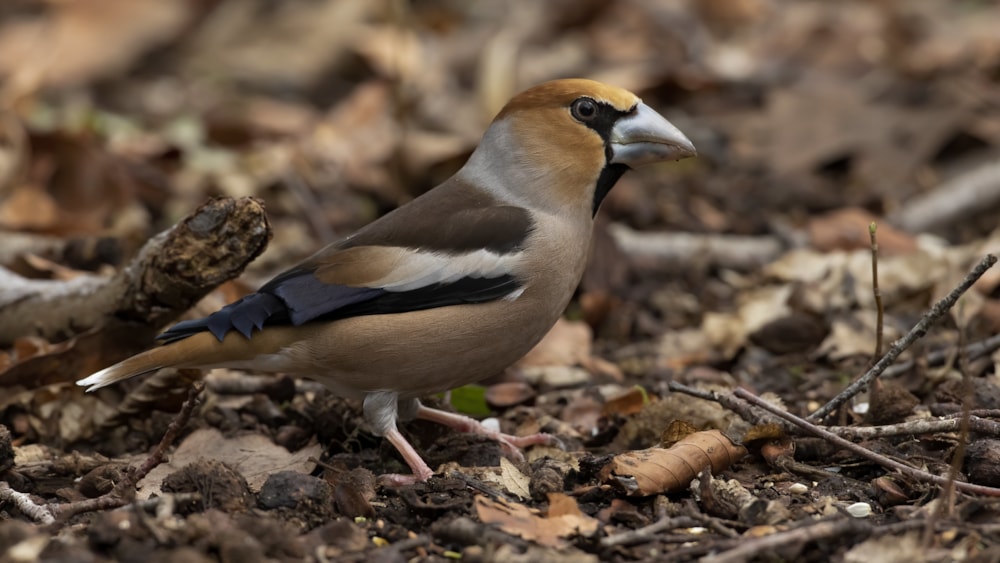
Hawfinch, Lynford Arboretum, Norfolk (Gary Watson).
Suffolk birders were treated to the lingering Shore Lark at Kessingland, Green-winged Teal and Smew at Minsmere RSPB and the young Black Brant at Falkenham Marsh. However, the Black-throated Diver at Suffolk Water Park wasn't seen beyond 20th.
A Ruddy Shelduck was at Liston, Essex, on 23rd and the couple of Western Cattle Egrets remained at Lee Valley CP. Abberton Res once again offered a healthy selection of 'padders', not least Smew, Slavonian Grebe and Long-tailed Duck.
Waxwings in Sandy and Biggleswade were among the Bedfordshire highlights, along with the wintering Ring-necked Duck at Priory CP and Great Grey Shrike at Brogborough. Up to five Smew were at Needingworth Quarry Lakes, Cambs, while one or two Iceland Gulls floated around various sites in that county.
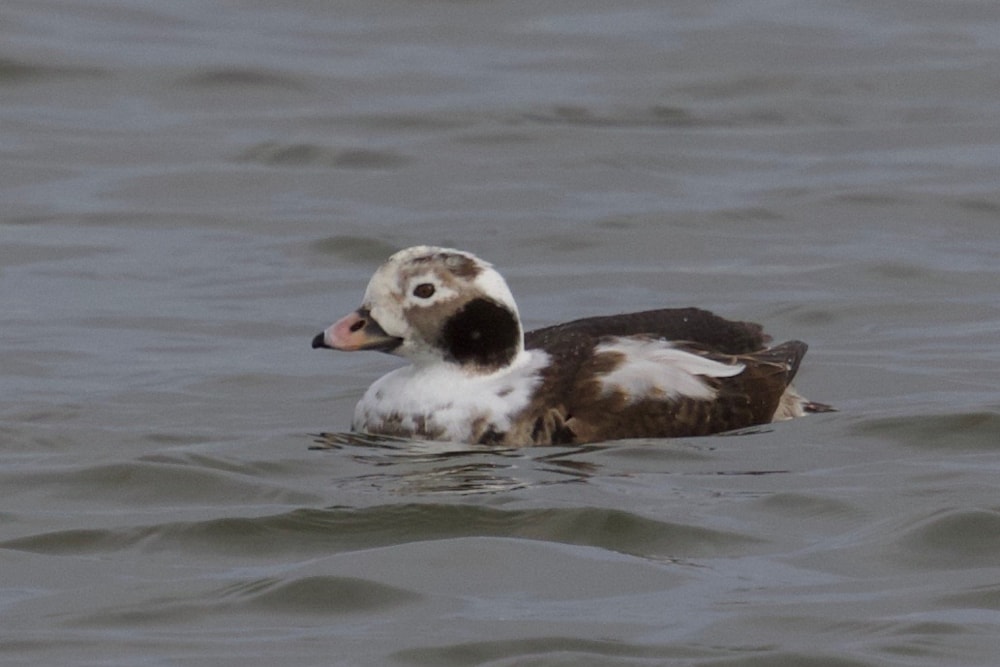
Long-tailed Duck, Abberton Reservoir, Essex (Paul Chamberlain).
South-East England
Kent endured a quiet week, where most birds of note were long-stayers, namely the Funton Creek Rough-legged Buzzard, Samphire Hoe Ring Ouzel, Sheppey Tundra Bean Goose and Dungeness Iceland Gull.
Neighbouring East Sussex had an even quieter week, with a possible Hooded Crow at Lewes unfortunately not getting beyond question mark status and the Hawfinch flock at Netherfield still available. West Sussex was also rather dead, with the lingering Long-tailed Duck at Dell Quay, a Eurasian Spoonbill at Medmerry RSPB and the Arun Valley Bewick's Swans being the highlights.
The Frensham Common Great Grey Shrike finally gave itself up for consecutive days when it reappeared on 21st. It then vanished on 23rd, though reappeared on 25th – it has no doubt kept a low profile across the south-west Surrey commons this winter. In the north of the county, the Great Northern Divers were still at Island Barn Res.
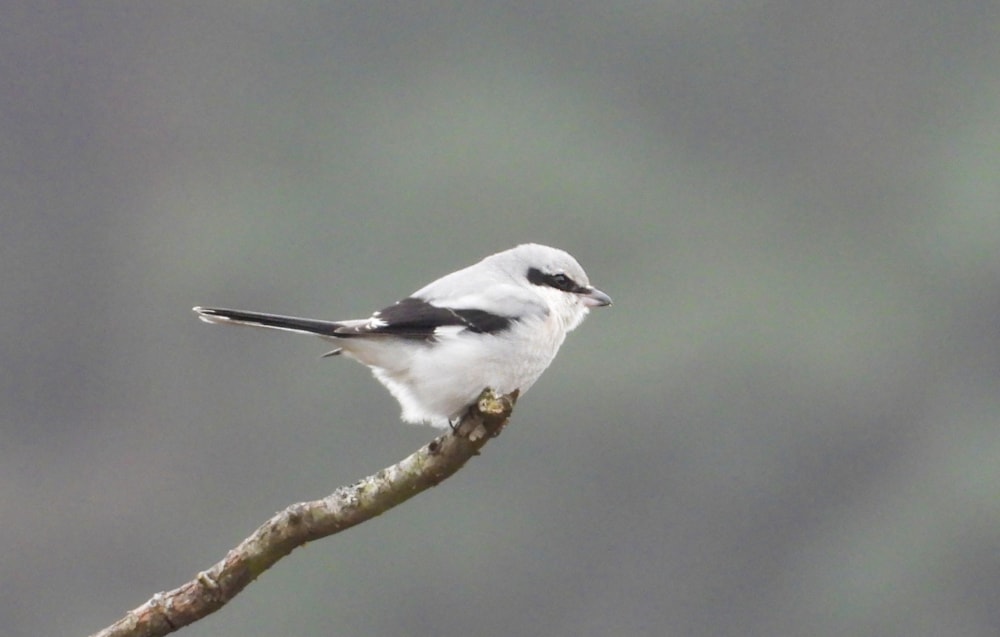
Great Grey Shrike, Frensham Common, Surrey (Josephine Snell).
Not a million miles away, in Mitcham, the Poulter Park Yellow-browed Warbler and two Siberian Chiffchaffs continued to draw in crowds. Elsewhere in the capital, the adult Iceland Gull reappeared at the London Wetland Centre on 22nd and Staines Res held on to its Long-tailed Duck and Greater Scaup.
Four Caspian Gulls at Calvert Lakes, Bucks, on 23rd was the highest number for the county during the review period. Three also roosted at Port Meadow, Oxon, on 19th and in the same county a Common Crane flew over Buscot Wick on 24th and a Red Knot was a notable find at Farmoor Res on the same day.
The Hoopoe at Badminston GPs continued to delight in Hampshire throughout. Presumably the same White-tailed Eagle – and likely a reintroduced individual – was seen in the New Forest on 23rd and 25th. Elsewhere in Hants, the Great Grey Shrike was still at Holm Hill, the Long-tailed Duck at Blashford Lakes and the released Great Bustard at Tidpit, while an adult Iceland Gull flew past Milford-on-Sea on 24th.
It was a quiet spell on the Isle of Wight, though after a largely wet and windy week in the south-east news of a Eurasian Stone-curlew over Niton during the night of 20-21st would have put a smile on the faces of spring and noc-mig enthusiasts alike.
South-West England
Hayle Estuary remained the place to be for gulls in Cornwall, with the adult Ring-billed and multiple Caspians seen regularly. To the north-east, a juvenile Kumlien's Gull was at Godrevy Point on 21st.
A drake Ring-necked Duck called in at Par Beach Pool on 23rd, with another still at Siblyback Res and the Lesser Scaup still at Stithians Res. Four more of the former stuck around at Tamar Lakes, Devon, while a female Lesser Scaup was reported from Slapton Ley on 19th. A Pomarine Skua was off Berry Head on 23rd while, in the north of the county, the Glossy Ibis hung on at Fremington Quay.
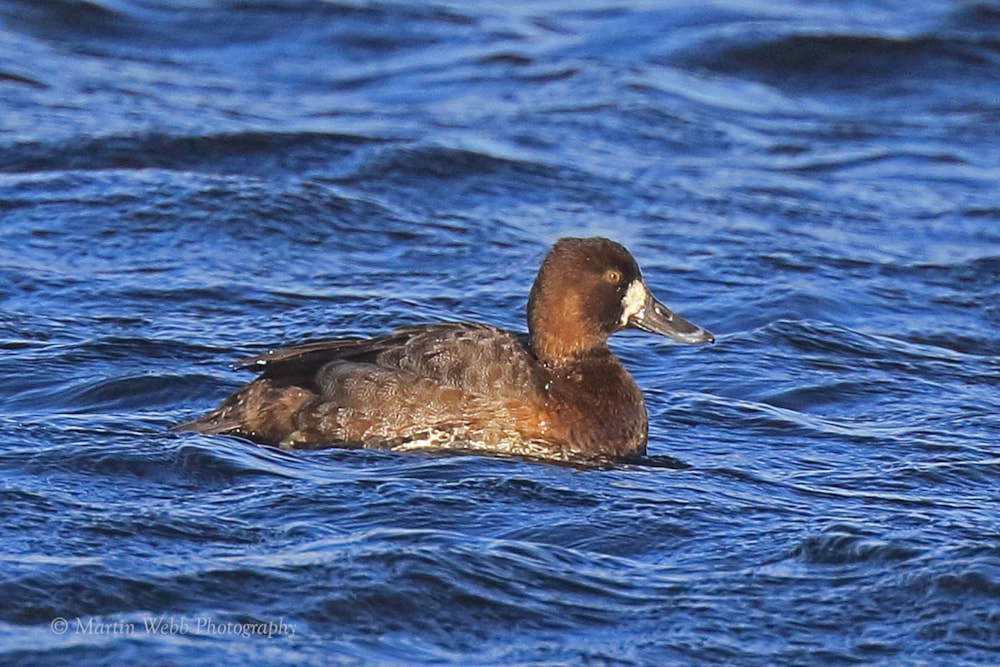
Lesser Scaup, Stithians Reservoir, Cornwall (Martin Webb).
A Willow Warbler was reported from Lulworth Cove, Dorset, on 23rd; other bits from around the county included a Black Brant in Poole Harbour, the Great Grey Shrike at Morden Bog and several Siberian Chiffchaffs.
In Somerset, the Great Grey Shrike lingered on Exmoor and the triumvirate of Long-tailed Duck, Black-throated and Great Northern Divers stayed at Barrow Gurney Res. The female Garganey was also still at Greylake RSPB.
Two Great Grey Shrikes were also still in Gloucestershire and Western Cattle Egret toured numerous Severn-side sites. The Greenland White-fronted Geese lingered at Slimbridge, where just a sole Bewick's Swan remains.
The Iceland Gull roosted regularly at Cotswold Water Park, while the Yellow-browed Warbler hung on in Westbury, Wilts.
Wales
A drake Green-winged Teal was found on floods at Llanengan, Gwynedd, on 22nd and was still there at the end of the review period. Other wildfowl included the Ring-necked Duck at Llyn Blaenmelindwr, Ceredigion, and the Garganey at Gnoll CP, Glamorgan.
Great Grey Shrikes were on offer at Llyn Brenig, Clwyd, and Usk Res, Carmarthen, this week, although it can't have been easy looking for either in the blustery conditions.
The adult Ring-billed Gull roosted again at Llys-y-Fran Res, Pembs, on 23rd – the first report of it for a few weeks. A juvenile Kumlien's Gull was a significant find at Aberavon, Glamorgan, on 23rd and lingered there subsequently.
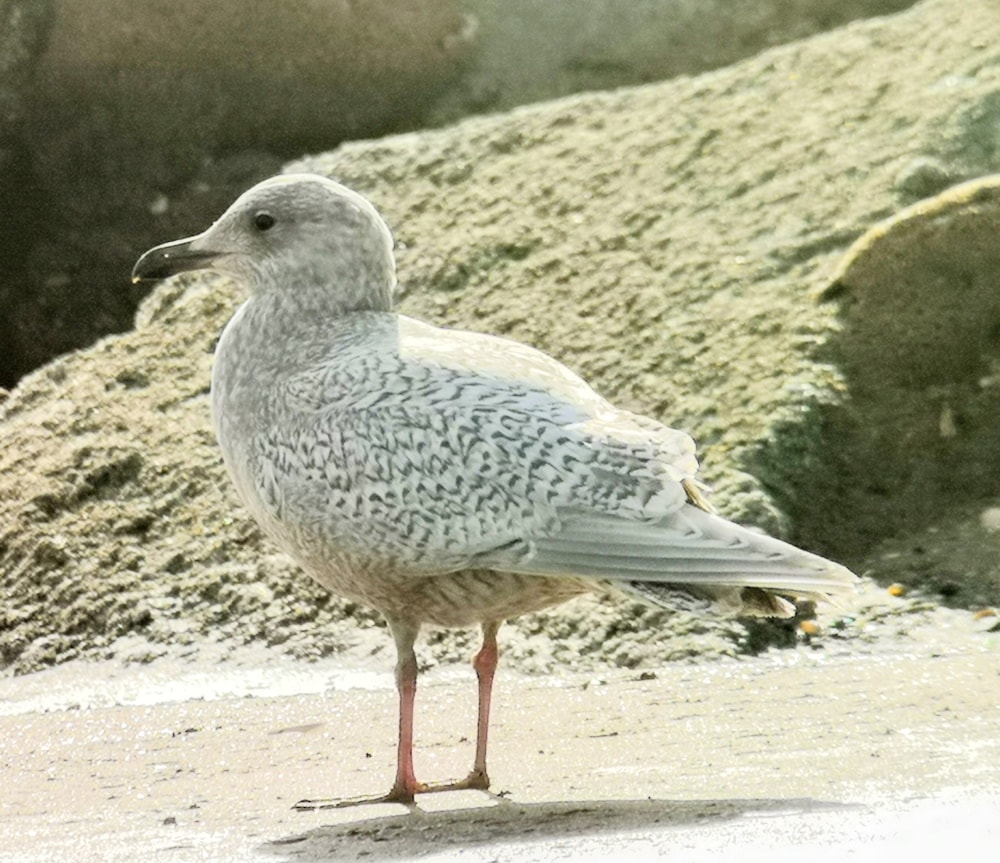
Kumlien's Gull, Aberavon, Glamorgan (Lee Dutton).
A great record for mid-Wales concerned a Common Crane reported as seen from a bus in fields near Llandovery, Carmarthen, on 22nd. It almost goes without saying that the Glossy Ibis was still at Newport Wetlands, Gwent.
Further north, a small flock of Greenland White-fronted Geese was seen at Anglesey's Alaw Estuary, with up to three Hawfinches available at Bodnant, Conwy.
Republic of Ireland
It was a quiet week in the stormy weather, with five Ring-billed Gulls including just a single first-winter bird – the lingering individual still at Omey Island, Co Galway. White-winged gull numbers were at best described as 'disappointing', with just a light scattering of Icelands noted.
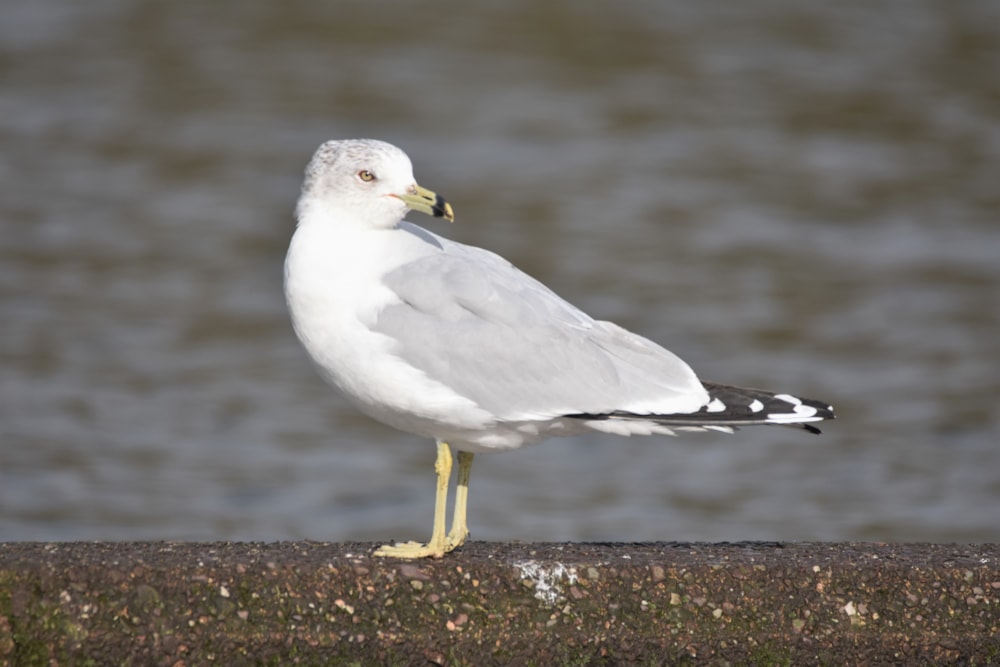
Ring-billed Gull, Cork City, Cork (Brian Power).
The two long-staying female Ring-necked Duck at Lough Atariff, Co Cork, were joined by a third on 23rd and there were singles in Cos Kerry, Clare, Monaghan and Donegal. The Surf Scoter was also still loitering off the north Clare coastline at Gleninagh Quay. A new American Wigeon, a first-winter drake, was at Co Wicklow's East Coast NR from 22nd, where there was also a Green-winged Teal.
Other records included a Red-necked Grebe again in Wexford Harbour on 22nd, Glossy Ibises still in Cos Waterford and Cork, and Great Egrets in Cos Cork and Galway.
Northern Ireland
It was such a quiet week in the nation that the best bird proved to be a hybrid – an American × Eurasian Wigeon on the Bann Estuary, Co Derry, on 20th. Highlights were otherwise restricted to a couple of Iceland Gulls, the Smew at Portmore Lough, Co Antrim, a small flock of Waxwings in Belfast and the long-staying Black Redstart at Portstewart, Co Derry.
Western Palearctic
This week saw Sweden's moulting Eastern Yellow Wagtail began to hint at its subspecific identification, with yellow tones on the super and green tints on the crown making it look a good taivana candidate. Given the English name 'Green-headed Wagtail', this would be the first confirmed record of this subspecies in the Western Palearctic – although 2018's spring male on Scilly hinted at a similar identity. Perhaps more intriguingly, Green-headed would lie on the other side of any potential further split of Eastern Yellow Wagtail to both Alaskan and Siberian, the only two subspecies previously recorded in the WP to date, making it a potentially blockbuster record.
The largest Saharan sandstorm to affect the Canary Islands in many years has inundated the isles with a hefty number of rare and mega regional vagrants. The impressive roll-call included a Lesser Crested Tern, Isabelline Wheatear and Western Olivaceous Warbler on Lanzarote, and a Greater Hoopoe-Lark and Lesser Whitethroat on Tenerife, as well as double figures of Desert Wheatears throughout the island chain.
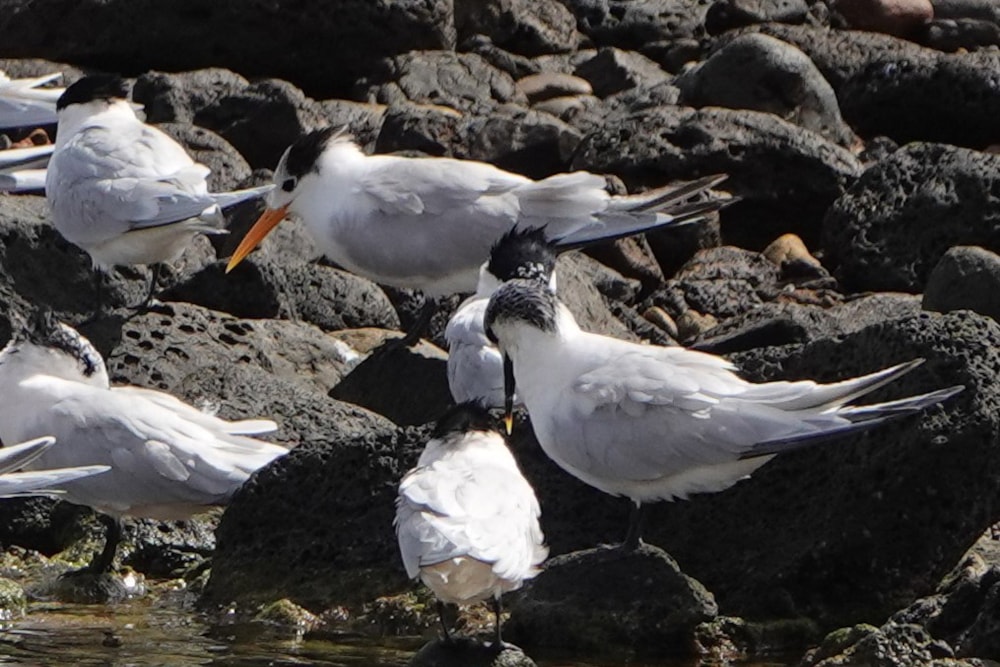
Lesser Crested Tern, Arrecife, Lanzarote (David Astins).
Unsurprisingly, Fuerteventura saw the brunt of the action, with WP-shattering news of a putative Horus Swift over Los Molinos on 24th – a potential regional first. Originally reported as a Little Swift, a smart series of photographs posted on the evening of the 26th revealed long, scythe-like wings, a relatively long, notched tail, and a broad, wraparound white rump patch. Hot on the heels of another very strong candidate in The Netherlands late last year, clearly this sub-Saharan species should be on the radar of all birders in the region.
Elsewhere, the island saw host to a probable Pale Crag Martin (which would be a first for Spain), Little Swift, two more Isabelline Wheatears (there had only been a single Canaries record previously), two Western Orphean Warblers, a further three Western Olivaceous Warblers, and a Western Black-eared Wheatear. The Abyssinian Roller on Gran Canaria, still present throughout the week, was joined by an African Desert Warbler on its favoured patch of inner-city wasteland on 25th. A first-winter American Herring Gull at a Tenerife recycling centre on 22nd was another Canaries first. Quite the week!
Last week's Northern Waterthrush on Pico, Azores, hung around to 21st; the pair of Wood Duck was still on Faial and a Greater Yellowlegs on São Jorge (this may be the bird seen there in 2018).
In Spain there was late news of a House Bunting in Tarifa on 17th, while a returning Lesser Flamingo was back at Laguna de Fuente de Piedra from 25th. In the north of the country, the wintering Brown Shrike remained steadfast. Flipping the trend of North African vagrants appearing in Europe was a Eurasian Eagle-Owl at Bni Abdallah, Morocco, on 16th, potentially the first documented North African record.
In Germany a drake Baikal Teal of unknown origin was at Lake Steinhude, Lower Saxony, on 25th. Two Baltic Black Scoter put in appearances this week, with drakes at Bülk, Germany, on 20th and Wladyslawowo, Poland, on 25th respectively. Austria's adult Oriental Turtle Dove remained in a Gramastetten garden until 22nd at least.
The Dutch Oriental Turtle Dove stayed in place throughout, while in Belgium the Pygmy Cormorant was unsurprisingly still loafing in Brussels, as was the French Bufflehead of last week.
A Steller's Eider briefly graced the south-west Norwegian coastline at Brusand on 19th; a first-winter Ivory Gull was on Røst from 20th. A male Black-throated Thrush was at Sekse on 19th, while another remained in Denmark at Køge on 21st.
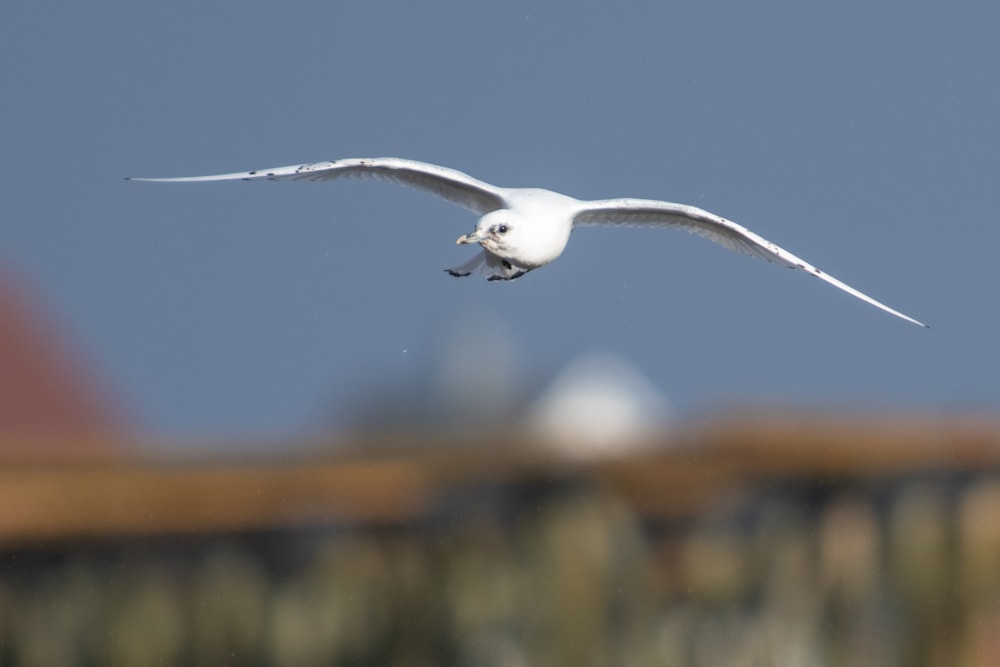
Ivory Gull, Røst, Nordland (Steve Baines).

